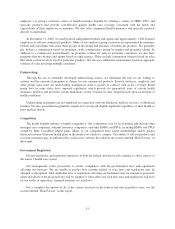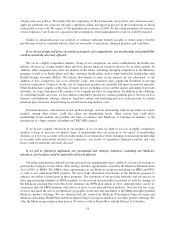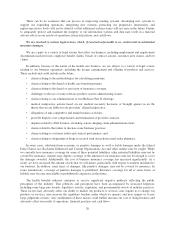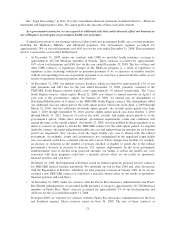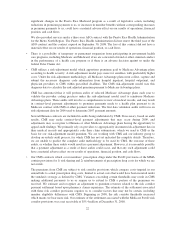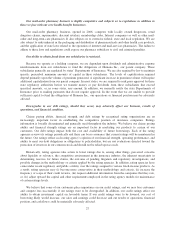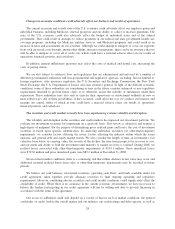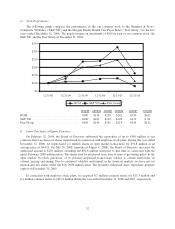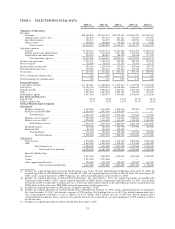Humana 2008 Annual Report Download - page 33
Download and view the complete annual report
Please find page 33 of the 2008 Humana annual report below. You can navigate through the pages in the report by either clicking on the pages listed below, or by using the keyword search tool below to find specific information within the annual report.Reinsurance and low-income cost subsidies represent reimbursements from CMS in connection with the
Medicare Part D program for which we assume no risk. Reinsurance subsidies represent reimbursements
for CMS’s portion of claims costs which exceed the member’s out-of-pocket threshold, or the
catastrophic coverage level. Low-income cost subsidies represent reimbursements from CMS for all or a
portion of the deductible, the coinsurance and co-payment amounts above the out-of-pocket threshold
for low-income beneficiaries. Monthly prospective payments from CMS for reinsurance and
low-income cost subsidies are based on assumptions submitted with our annual bid. A reconciliation and
settlement of CMS’s prospective subsidies against actual prescription drug costs we paid is made after
the end of the year.
Settlement of the reinsurance and low-income cost subsidies as well as the risk corridor payment is
based on a reconciliation made approximately 9 months after the close of each calendar year. This
reconciliation process requires us to submit claims data necessary for CMS to administer the program.
Our claims data may not pass CMS’s claims edit processes due to various reasons, including but not
limited to, discrepancies in eligibility or classification of low-income members. To the extent our data
does not pass CMS’s claim edit processes, we may bear the risk for all or a portion of the claim which
otherwise may have been subject to the risk corridor provision or reimbursement as a low-income or
reinsurance claim. In addition, in the event the settlement represents an amount CMS owes us, there is a
negative impact on our cash flows and financial condition as a result of financing CMS’s share of the
risk. The opposite is true in the event the settlement represents an amount we owe CMS.
Other risks could include:
• future changes to these government programs which may affect our ability or willingness to participate
in these programs;
• higher comparative medical costs;
• government regulatory and reporting requirements; and
• higher marketing and advertising costs per member as a result of marketing to individuals as opposed to
groups.
Our industry is currently subject to substantial government regulation, which, along with possible
increased governmental regulation or legislative change, could increase our costs of doing business and could
materially adversely affect our profitability.
The health care industry in general and health insurance, particularly HMOs and PPOs, are subject to
substantial federal and state government regulation.
The enactment of the Medicare Improvements for Patients and Providers Act of 2008, or the Act, in July
2008 could affect our Medicare operations. Principally, beginning in 2011 sponsors of Medicare Advantage
PFFS plans will be required to contract with providers to establish adequate networks, except in geographic areas
that CMS determines have fewer than two network-based Medicare Advantage plans. Additionally, the Act
prohibits several different kinds of marketing activities by Medicare plan sponsors and their brokers beginning in
2009, and will phase out indirect medical education (IME) costs beginning in 2010. We are implementing
various operational and strategic initiatives that are intended to answer the challenges presented by the Act. In
addition, most of our PFFS enrollees reside in geographies where we have developed a PPO network and offer a
PPO plan. We will continue to develop our PPO network and build network-based plan offerings to address the
network restriction. Nonetheless, there can be no assurance that we will be able to successfully implement those
initiatives. Failure to implement this strategy may result in a material adverse effect on our results of operations,
financial position, and cash flows.
Our licensed subsidiaries are subject to regulation under state insurance holding company and Puerto Rico
regulations. These regulations generally require, among other things, prior approval and/or notice of new
products, rates, benefit changes, and certain material transactions, including dividend payments, purchases or
sales of assets, intercompany agreements, and the filing of various financial and operational reports.
23




